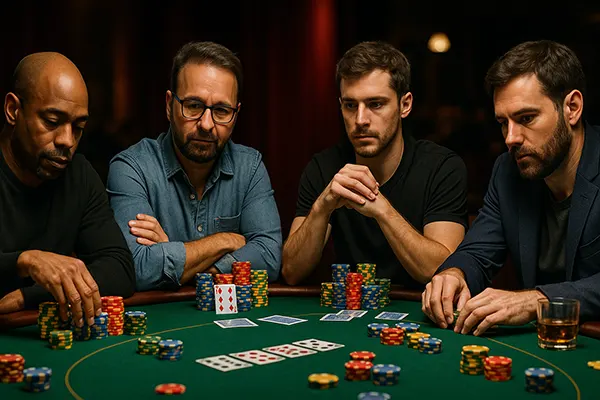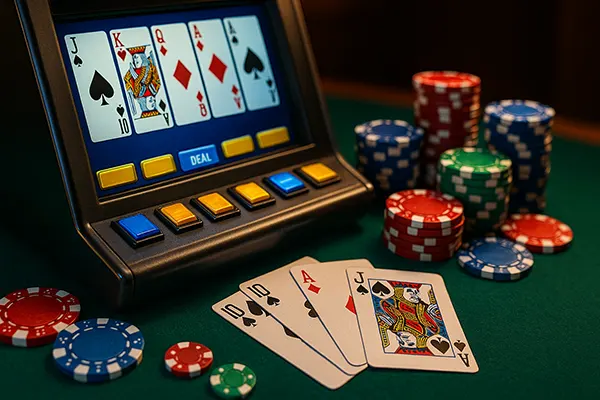The Youngest WSOP Champions: Stories That Inspire

The World Series of Poker (WSOP) is the most prestigious event in the poker world, and while it has crowned many legends, some of its most captivating champions are those who achieved greatness before reaching full adulthood. This article delves into the incredible stories of the youngest WSOP winners who defied the odds, rewrote records, and inspired generations of players across the globe.
Teen Phenoms Who Changed the Game
One of the most iconic names in this category is Joe Cada. In 2009, at just 21 years old, he became the youngest Main Event winner in WSOP history, walking away with a jaw-dropping $8.5 million. His calm demeanour, calculated plays, and underdog status made him a fan favourite and set a new benchmark for young poker professionals.
Another rising star was Annette Obrestad. She stunned the world by winning the inaugural WSOP Europe Main Event in 2007, just one day before her 19th birthday. Although it wasn’t a Las Vegas win due to age restrictions, it still holds WSOP status and showcased her incredible strategic prowess at an age when most are still learning the basics of poker.
Adrian Mateos is another testament to youth and brilliance. At only 19 years old, he took home the WSOP Europe title in 2013, marking the beginning of what would become a phenomenal career with multiple bracelets by 2025. His aggressive yet composed playing style continues to be studied by aspiring players today.
The Impact of Youthful Strategy
Young champions bring a fresh approach to the poker table. Their strategies are often more aggressive, tech-savvy, and inspired by online play. This contrasts with the traditional, risk-averse style that dominated live poker scenes for decades. It has forced seasoned players to adapt and evolve their tactics to stay competitive.
Furthermore, younger players tend to absorb information rapidly and rely on solvers and data-driven decisions. The widespread availability of advanced training tools has democratised poker education, allowing prodigies to emerge from anywhere in the world and compete at the highest level.
This new generation’s emphasis on mental and physical conditioning has also redefined what it means to be a professional poker player. Meditation, fitness, and emotional regulation have become standard practice for these high-performing young talents.
Legal Hurdles and Age Restrictions
In the United States, WSOP participation requires players to be at least 21 years old. This rule, rooted in Nevada’s gambling laws, limits many prodigious talents from competing in Las Vegas until they reach that milestone. However, international events like WSOP Europe allow participation from the age of 18, offering a valuable platform for rising stars.
These regional differences have significant implications. Young talents often get their start in European circuits, where they can hone their skills in high-stakes environments before entering the American WSOP events. This global path has become a common trajectory for many young champions.
Despite these hurdles, the rise of online poker has allowed players to build reputations and sharpen their strategies before legally setting foot in a WSOP event. Platforms like GGPoker and PokerStars serve as stepping stones, preparing players for the live tournament scene.
Crossing the Bridge from Online to Live
Many young WSOP winners began their journeys online. The flexibility of online poker enables players to log thousands of hands and develop their style in a way that would be impossible through live play alone. This accelerates their learning curve dramatically.
Joe Cada, for example, was a prolific online player before making his mark in the Main Event. His transition from digital tables to real-life action demonstrated the effectiveness of this pathway, influencing a generation of online players dreaming of WSOP glory.
The ability to analyse hands post-game using advanced tracking software has given young players an edge, making their move to the live circuit not just seamless but often revolutionary. They arrive prepared, confident, and strategically advanced.

Inspiring the Next Generation
The stories of young WSOP champions continue to inspire aspiring players worldwide. These individuals prove that age is not a limitation when it comes to mastering poker. Their achievements have redefined what’s possible and made the dream of a bracelet more accessible to a younger audience.
By achieving global fame and financial success early in life, these champions become ambassadors for the game, sparking interest in regions and demographics previously less engaged with poker. Their influence extends beyond tables into social media, content creation, and poker education platforms.
Their legacy is not just in the trophies they collect, but in the communities they help build. Poker is no longer viewed solely as a game for seasoned veterans; it’s a dynamic competition open to anyone willing to put in the time and dedication, regardless of age.
The Evolving Face of Poker
With every passing year, the face of professional poker becomes younger, more diverse, and more global. Initiatives like WSOP Circuit Events and online satellites are helping nurture new talent by providing accessible entry points into major tournaments.
Moreover, media coverage and documentary-style content highlighting these young champions create aspirational figures that new players can look up to. From Twitch streams to YouTube hand breakdowns, the ecosystem around young players keeps expanding.
As we look toward the future, the presence of young champions on the WSOP stage will likely increase. They’re not just playing the game — they’re changing it, one tournament at a time.



